Backlink Quality vs. Quantity: What’s More Important in 2021?
Think “effective SEO strategies” and link building instantly springs to mind.
It’s a quick, actionable, and power-packed resuscitator for your rankings.
By generating high-quality backlinks, you can redirect a ton of convertible traffic your way.
More leads, massive sales, and consistent business growth. Sounds like the perfect mix for your company, right?
When it comes to creating a winning link building strategy, you should have a razor-sharp focus on two aspects: backlink quality and quantity.
In this blog, we’ll dive deeper into why these aspects matter so much. We’ll also take a closer look at what’s more important: backlink quality or quantity? How do you get valued backlinks to a website? And wait, are backlinks still important in 2021?
We’ve got the answers. Let’s get started!
Struggling to build lots of high-quality backlinks? Fill out the form to let our link building experts do the trick!
Contents
What Are Backlinks and How Do I Get Them?
Link Building Quality vs. Quantity: What Should I Focus On?
What Are Backlinks and How Do I Get Them?
Before we deconstruct backlink quality and quantity, let’s start with the basics so you can get up to speed.
Simply put, a backlink is a hyperlink that redirects web users to your web content, i.e., product/service pages, blogs, etc.
Here’s a video that illustrates this:
Let’s consider an example to make things a tad clearer.
Let’s say you’ve written a stellar blog that covers a new topic in your industry.
The blog is packed with rich insights, value-added tips, high-quality images, and research-backed statistics.
Shortly after you publish your blog, Forbes decides to cover a similar topic owing to its popularity and demand in your niche.
They haven’t come across your content yet, but as they’re working on their piece, they stumble upon your blog during their research process.
They’re impressed with the insights, and choose to reference your piece in their own work.
As they quote your blog, they offer you a backlink by using anchor text.
Here’s what this looks like:
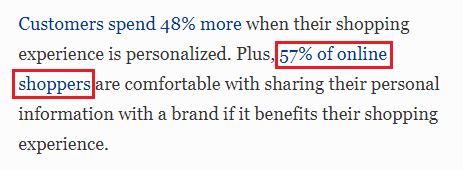
When web users click on the anchor text, they’ll be redirected to your site.
And you don’t have to include statistics in your content to earn backlinks; simply writing engaging content can do the trick!
In fact, if your SEO efforts have been top-tier, a high-DA (domain authority) company like Forbes will notice you and send some link juice your way without being prompted to do so via a blog or any other form of content.
Here’s a glimpse of what this may look like:
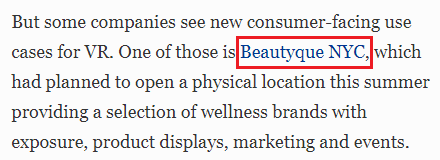
These are all examples of high-quality backlinks.
Why are they high-quality?
Because they’re coming from a reputable company like Forbes that has an impressive DR (domain rating) of 93.
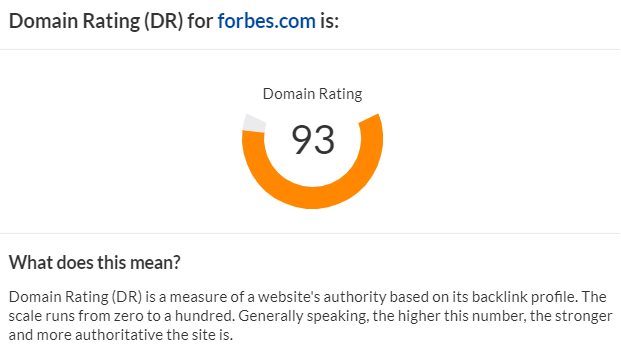
Forbes is a tour de force. The company attracts millions of web users on a regular basis.
If you earn dofollow Forbes backlinks, you’ll notice a massive upsurge in your traffic and rankings.
This is why you should focus on how to get quality backlinks.
But what else constitutes a high-quality backlink? And where does backlink quantity fit into the equation?
Let’s find out.
New to link building? Fill out the form to let our experts take the reins! We’ll help you rank higher and bag more clients with high-quality backlinks.
Link Building Quality vs. Quantity: What Should I Focus On?
Backlink Quality
Building high-quality backlinks is your golden ticket to getting a power-packed SEO boost.
If you earn a backlink from an industry giant like Forbes, Medium, Business Insider, or Entrepreneur, you’ll notice a generous rise in conversions.
In addition, your company’s reputability and authoritativeness will increase by leaps and bounds.
As stated earlier, backlink quality is largely determined by a company’s DA.

The higher, the better.
We recommend checking your company’s DA prior to launching your link building strategy.
If you’re just starting off, aim to get dofollow backlinks from companies with a DA score that’s roughly 20 points more than yours.
This will help you start off on the right (and steady) foot as opposed to shooting for the stars and returning with your hands empty.
While checking a company’s DA can help you determine whether it offers high-quality or low-quality backlinks, you shouldn’t stop there.
There are several other factors that come into play here.
No matter how reputable a company may be, a poorly placed or tangential nod to your site won’t do you any favors.
If you’re looking to make high-quality backlinks, take more than just the DA into consideration.
Here are some key factors you should focus on:
1. Backlink Placement
A high-quality backlink appears organically in text. It’s not awkwardly forced into a paragraph; instead, it fits in smoothly and seamlessly.
Here’s why this matters:
Web users are smart. They know when a company is trying to be promotional, and they’re likely to opt out if there’s excessive and unshrouded promotion involved.
If you receive a backlink that’s awkwardly placed and looks promotional, you won’t get much out of it—no matter how credible the backlink lending company may be.
A stellar backlink is placed in the body or CTA (call-to-action) of a blog, article, or any other form of content.
If you receive a backlink from a high-DA site but notice that it’s not well-placed, feel free to reach out to your link building partner via email.
2. Backlink Relevance
Let’s say you run a furniture store in New York.
While touching upon how technology is influencing interior design, TechRadar (DA = 90) ends up offering you a backlink.
Great, right?
Well, in the same vein, Architectural Digest (DA = 87) includes a link to your content in their own long-form blog on the hottest furniture trends in New York this year.
Sure, TechRadar has a higher DA than Architectural Digest.
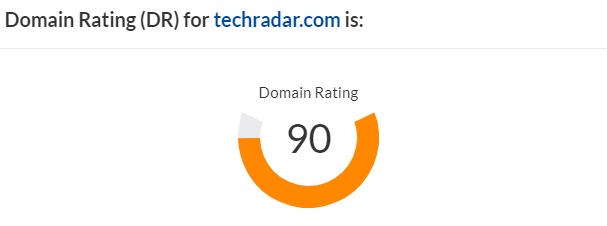
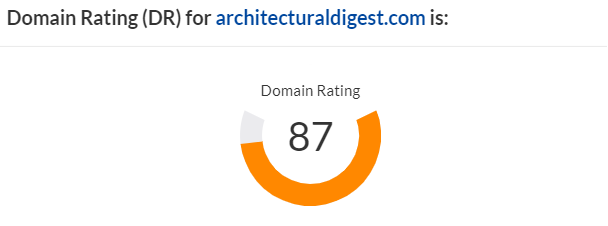
But which backlink is more relevant to your products, audience, industry, content, topics, and location?
The latter.
Backlink relevance is a make-it or break-it factor here.
It’s important to note that TechRadar’s audience is largely interested in tech news and reviews.
If they offer you a quality backlink, you’ll manage to target a small subset of people who enjoy both tech and interior design.
This may be 10%, 15%, or 20% of their audience, at best.
However, earning a backlink from Architectural Digest will help you engage interior design aficionados.
As a furniture store owner, that’s your target audience.
And as you engage your ideal demographic, you’ll maximize conversions.
Keep backlink relevance in mind each time you receive a backlink.
This isn’t to say that receiving backlinks from companies that deviate from your industry is useless.
It’s not.
However, it’s not as significant as receiving backlinks from industry-specific businesses.
In addition, look for topical relevance. And if the backlink is locally relevant, you’ve hit the jackpot.
Keeping these factors in mind will go a long way in helping you create quality backlinks that can benefit your business the most.
3. Backlink Count
Each time you earn a backlink, scan the lending company’s content to gauge how many other businesses they’ve provided backlinks to.
If the number’s pretty high in relation to the word count, you’re in trouble.
You’ve probably connected the dots by now.
If a paragraph features a single backlink, web users are more likely to click on it.
However, if the same paragraph is filled with multiple hyperlinks, your backlink instantly becomes less clickable; there’s a smaller chance of web users clicking on it.
And if the other companies that have been linked are your competitors, your backlink further goes down in value.
If you’re looking to get free quality backlinks to your website, make sure you keep an eye out for backlink count.
Backlink Quantity
By now, we’re sure you have a strong grasp on the importance of backlink quality.
If you fail to check off the right boxes, you’ll struggle to reap the benefits of link building.
And while building high-quality backlinks is important, ensuring you receive sizeable backlinks is just as imperative.
The link building quality vs. quantity debate settles here. Both are just as important!
However, people often prioritize backlink quality over quantity.
Here’s why you should avoid doing this if you’re looking to tap into long-term SEO success.
Let’s say you receive a couple of high-quality backlinks (DA = 90) every other month. Over time, the number of backlinks remains consistent but fails to increase.
In comparison, one of your key competitors earns a lot of backlinks from companies with an average DA of 75.
Ultimately, you’re both garnering a similar amount of traffic and ranking identically on Google SERPs.
While you’ve prioritized quality, you’ve sidelined quantity. And while your competitor has doubled down on quantity, they’ve let go of quality.
If you give one aspect more importance over the other, you’ll struggle to unlock your link building potential and improve your online presence.
Here are some key aspects of backlink quantity that should be kept in mind when creating a link building strategy:
1. Backlinks vs. Referring Domains
A referring domain is a site that “refers” to your business without providing a hyperlink, i.e., they mention your company without including clickable anchor text.
If you’re hyperfocused on backlink quality, you’ll disregard the importance of referring domains.
After all, how can you possibly benefit from mere mentions that don’t redirect web users to your site?
Well, you can, and more than you may think.
According to research, the number of referring domains determines how well you rank on Google SERPs.
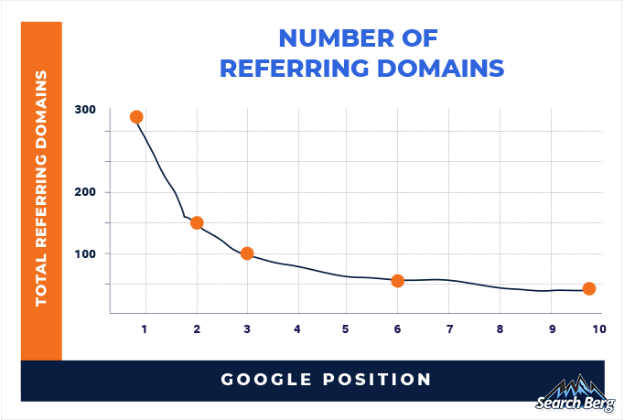
Of course, converting unlinked mentions into strong backlinks is a great way to rank even higher on SERPs.
But dismissing the quantity of referring domains altogether will cost you in the long run.
While they may not be clickable, unlinked mentions cause visible ripples.
Web users may have to do a little extra work by manually looking up your business, but they will take the initiative if the mention is compelling enough!
By focusing on the quantity of backlinks, you’ll manage to increase your referring domains and gradually work towards converting them into backlinks. This is how you get quality backlinks in 2021!
2. Spam Avoidance and Elimination
Backlink quantity has gotten a bad rap over the years. And it’s hard to point fingers because the criticism is partly justified.
If you’re creating a link building strategy with backlink quantity in mind, you can easily go wrong.
This is because using tactics to generate more (as opposed to quality) backlinks can result in generating unreliable links from spammy websites.
If you fall into this trap, you could end up getting penalized by Google.
To avoid resorting to black hat SEO techniques—albeit inadvertently—make sure you only focus on increasing backlink quantity after you’ve covered all the bases of backlink quality.
This way, you’ll eliminate the risk of getting spammy mentions and backlinks.
In other words, make sure you fall in the middle and avoid the extremes. You’ll manage to get valued backlinks to your website without getting in unnecessary trouble.
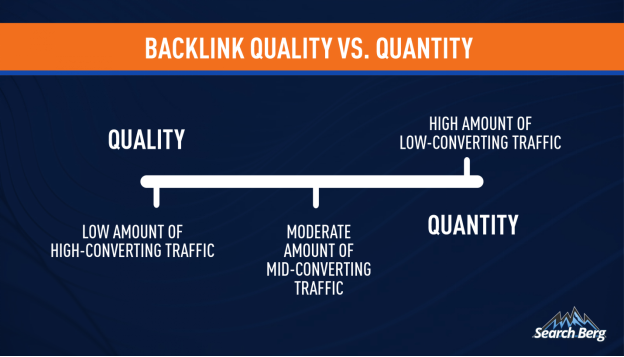
By creating a strategy without falling on the opposite ends of the spectrum, you’ll get a steady start.
As you master the middle strategy, start focusing on building a high amount of high-converting traffic.
Wrapping Up!
In this blog, we walked you through the key aspects of backlink quality and quantity.
If your search history is filled with queries like “how to get dofollow backlinks,” “how to do link building in SEO,” and “how to get quality backlinks in 2021,” we can give you a head start!
Browse through our blog, 10 Advanced Link Building Tips and Tricks to Boost Your SEO, to revamp your link building strategy.
And if you’re still unsure about how link building can benefit your business, check out our blog, A Marketer’s Guide to the Powerful Benefits of Consistent Link Building. This blog also touches on how to make high-quality backlinks so you get a 2-in-1 guide!
Once you’re ready to get started, give us a call at 855-444-4777 and our link building experts will create a customized link building strategy for your business!















One thought on “Backlink Quality vs. Quantity: What’s More Important in 2021?”